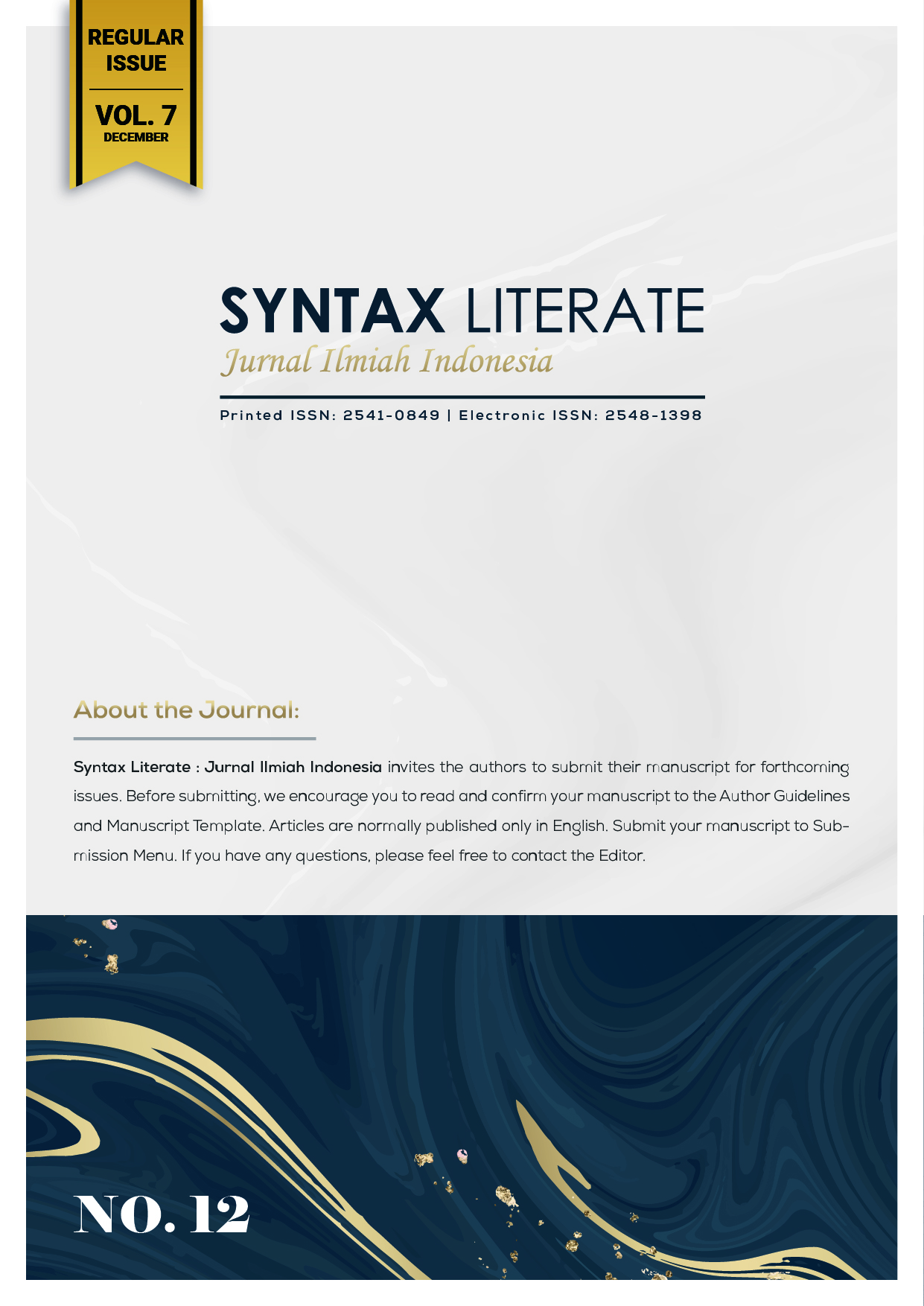Optimasi Liposom Sebagai Sistem Penghantaran Obat
Abstract
Pharmaceutical formulation technology and drug delivery systems play an important role in the process of discovering new pharmaceutical therapies to the public. Physicochemical and molecular considerations including ion-molecular equilibrium, hydrophilic-lipophilic equilibrium, biopharmaceutical processes, metabolism and biodegradation, drug-receptor affinity, physiological considerations, and biocompatibility of the system are the main factors (Ronny Martien et al, 2012). Liposomes are pharmaceutical preparations developed in the pharmaceutical world because liposomes have advantages, including increasing the efficacy and therapeutic index and increasing drug stability with encapsulation systems (Akbarzadeh et al, 2013). Liposomes are usually formed from a phospholipid, which is commonly used to change the pharmacokinetic profile of a drug, natural compound, vitamin or enzyme. Liposomes have been widely studied for natural compounds. Due to their unique properties, liposomes can be used to improve the performance of herbal products by increasing solubility, improving BA, increasing intracellular uptake, changing pharmacokinetic profiles and biodistribution (Aulia, 2022). The purpose of this study was to determine the optimization of liposomes as a drug delivery system. This study uses the Literature Review method. The results showed that liposomes could improve the therapeutic activity and safety of the drug, particularly by delivering the drug at the site of action and regulating drug levels at therapeutic concentrations over an extended period of time. (Sriwidodo, 2022).
Downloads
References
Sausan Rihhadatulaisy.2020. Stabilisasi Liposom Dalam Sistem Penghantaran Obat. Majalah Farmasetika, vol.5 .hal 257-272.
Ronny Martien et al.2012, Perkembangan Teknologi Nanopartikel Sebagai Sistem Penghantaran Obat. Majalah Farmaseutik, vol. 8 no.1.
Akbarzadeh, A., Rezaei-sadabady, R., Davaran, S., Joo, S.W., Zarghami, N., 2013. Liposome : Classification , Preparation , And Applications. Nanoscalereslett, Vol 8, 1–9.
Rini D,. Sri N,.Enadepi,.Marchaban.2016. Metode Pemanasan Dan Sonikasi Menghasilkan Nanoliposom Dari Fosfolipid Lesitin Kedelai (Soy Lecithin). Jurnal Farmasi Sains Dan Komunitas.Vol 13.hal 23-27.
Aulia, RN., Sriwidodo. 2022. Sistem Penghantaran Ekstrak Herbal dalam Formulasi dan Aplikasi Biomedis. Majalah Farmasetika. 7(5) : 424-458.
Ramadon, D., Munim, A. 2016. Pemanfaatan Nanoteknologi dalam Sistem Penghantaran Obat Baru untuk Produk Bahan Alam. Jurnal Ilmu Kefarmasian Indonesia. 14(2) : 118-127.
Rihhadatulaisy, S., Sriwidodo., Putriana, NA. 2020. Stabilisasi Liposom dalam Sistem Penghantaran Obat. Majalah Farmasetika. 5(5) : 257-272.
Sriwidodo. 2022. Liposom Sebagai Sistem Penghantaran Obat Untuk Obat Herbal Bahan Alam. Jurnal Sains Farmasi dan Klinis. 2(3) : 110-119.
Verawaty., Halim, A., Febriyenti. 2016. Efektivitas Sistem Penghantaran Liposom pada Katekin Sebagai Antioksidan. Jurnal Sains Farmasi dan Klinis. 2(2) : 176-182.
Winarti, L. 2022. Sistem Penghantaran Obat Tertarget, Macam, Jenis-Jenis Sistem Penghantaran, dan Aplikasinya. Stomatognatic (J. K. G Unej). 10(2) : 75-81.
Aslan, Ä°. & Kurt, A. A. (2021). In-vitro comparison release study of novel liposome and conventional formulation containing Rosmarinus officinalis extract . Current Perspectives on Medicinal and Aromatic Plants (CUPMAP) , 4 (1) , 13-21 . DOI: 10.38093/cupmap.848115
Chen, Jun & Zhang, Ting & Cai, Baochang & Chen, Minglei & Fang, Yun. 2010. Pharmaceutical properties of novel liposomes containing total alkaloids from seed of Strychnos nux-vomica. Zhongguo Zhong yao za zhi = Zhongguo zhongyao zazhi = China journal of Chinese materia medica. 35. 35-9. 10.4268/cjcmm20100107.
Di Costanzo, A., & Angelico, R. 2019. Formulation Strategies for Enhancing the Bioavailability of Silymarin: The State of the Art. Molecules (Basel, Switzerland), 24(11), 2155. https://doi.org/10.3390/molecules24112155
Al-Samydai, A., Alshaer, W., Al-Dujaili, E., Azzam, H., & Aburjai, T. (2021). Preparation, Characterization, and Anticancer Effects of Capsaicin-Loaded Nanoliposomes. Nutrients, 13(11), 3995. https://doi.org/10.3390/nu13113995
Singh, Aditya. Shubhrat maheshwari. 2020. Extraction, Development, and Characterization of Tamarind Seed Oil Based Liposome. International Journal of Pharmaceutical Research | Jul - Sep 2020 | Vol 12 | Issue 3
Dewi, A. D. S. P., Jufri, M., & Iskandarsyah (2018). Development and In Vitro penetration test of ethosomal cream-containing pegagan (centella asiatica) herbal extract. International Journal of Applied Pharmaceutics, 10(Special Issue 1), 120-125. https://doi.org/10.22159/ijap.2018.v10s1.25
Alharbi, Waleed S., Fahad A. Almughem., Alshaimaa M. Almehmady., Somayah
J. Jarallah .,Wijdan K. Alsharif., Nouf M. Alzahrani 2 and Abdullah A. Alshehri. 2021 Phytosomes as an Emerging Nanotechnology Platform for the Topical Delivery of Bioactive Phytochemicals. Pharmaceutics 2021, 13, 1475
Di Pierro F, Khan A, Bertuccioli A, Maffioli P, Derosa G, Khan S, et al. Quercetin Phytosome® as a potential candidate for managing COVID-19. Minerva Gastroenterol 2021;67:190-5. DOI: 10.23736/S2724-5985.20.0277
Rimkiene, Laura., Juste Baranauskaite., Mindaugas Marksa., Laurynas Jarukas and Liudas Ivanauskas.2021. Development and Evaluation of Ginkgo biloba L. Extract Loaded into Carboxymethyl Cellulose Sublingual Films. Appl. Sci. 2021, 11(1), 270; https://doi.org/10.3390/app11010270
Ju Ho P, Jun Sung J, Ki Cheon K, Jin Tae H. Anti-inflammatory effect of Centella asiatica phytosome in a mouse model of phthalic anhydride-induced atopic dermatitis. Phytomedicine. 2018 Apr 1;43:110-119. doi: 10.1016/j.phymed.2018.04.013. Epub 2018 Apr 6. PMID: 29747743
Gregoriadis, Gregory. 2017. Liposome Technology. 1st edition. England : CRC Press.
Salunkhe, V. R., Patil, P. S., Wadkar, G. H. and Bhinge, S. D. (2021) “Herbal Liposomes: Natural Network for Targeted Drug Delivery Systemâ€, Journal of Pharmaceutical Research International, 33(29B), pp. 31-41. doi: 10.9734/jpri/2021/v33i29B31586.
Copyright (c) 2022 Sri Mulyanthy Tanuwidjaja

This work is licensed under a Creative Commons Attribution-ShareAlike 4.0 International License.











